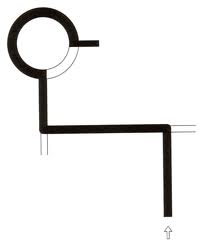Independent driving will become part of the practical driving test in Great Britain in October 2010.
It's tasking the candidate to drive for about 10 minutes, either following traffic signs, following a series of verbal directions, or a combination of both.

To help the candidate be clear about where they're going when following verbal directions, the examiner will show them a diagram.
It doesn't matter if candidates don't remember every direction, or if they go the wrong way - that can happen to the most experienced drivers.
Newspaper reports
The suggestion that the introduction of independent driving into the practical driving test could lead to a significant drop in test pass rates has appeared in the media. This story was based on the initial research which looked at the feasibility of introducing independent driving. The design of the route used during that trial accounted for the dramatic impact on candidate performance.
We have, therefore, undertaken further research which more closely reflects the way we shall introduce the new test elements. This showed that with careful route design and with candidates gaining experience of driving without the constant guidance of their instructor, the learner drivers were able to complete the independent driving element without a significant increase in driving faults. We shall continue to monitor pass rates.
Manoeuvres
From October, car test candidates (category B) will have to complete one reversing manoeuvre rather than two. The manoeuvre will be selected at random by the examiner from:
In addition a controlled stop is carried out on every test (this means stopping in a place specified by the examiner.) An emergency stop exercise will still be conducted on one in three tests.
Routes, directions and sat navs
If the candidate goes off-route during the independent driving section, the examiner will get the candidate back on route and continue with the independent driving section wherever possible. The test won't be terminated.
If the candidate looks like taking a wrong turning, the examiner will control the situation as they do now and preferably step in before the candidate goes off route. If that's not possible, the examiner will help the candidate get back on route as soon as possible by guiding them with normal directions.
Independent driving is not a test of the candidate's orientation skills. If the candidate goes off route, but does not commit a fault, there's nothing to assess. Any faults that did occur would be assessed under the circumstances at the time - as usual. There is no change to assessment.
There will be times when, due to poor or obscured signage, the examiner may have to intervene. If this happens the examiner would say, 'There are no signs here. Just continue ahead please' and then, 'Now, carry on following the signs to .....'
If the candidate asks for a reminder of the directions, the examiner will be happy to confirm them. Driving independently means making your own decisions and, just like when driving with friends, this includes deciding when it's safe and appropriate to ask for confirmation on where you're going.
Independent driving is designed to test the learner's ability to drive unsupervised and make decisions without guidance and in unfamiliar contexts. DSA is therefore taking the opportunity to review the appropriateness of current route publication practices.
The independent driving section of the test is approximately 10 minutes when you will be asked to drive making your own decisions. A sat nav gives directions in much the same way as the driver trainer, or the examiner, so it's not appropriate to use for independent driving.
For more information from the DSA follow this link to the Independent driving page of the Direct Gov website.
For more information follow this link to the Independent driving page on You Tube.
